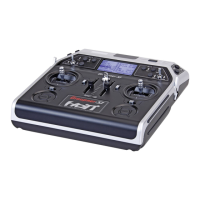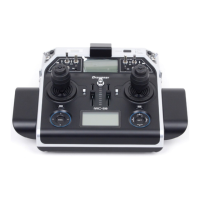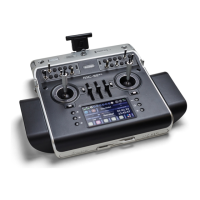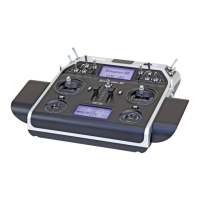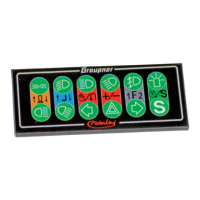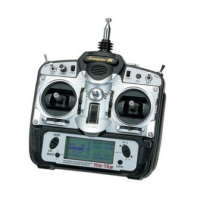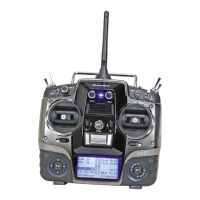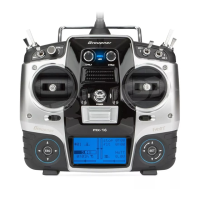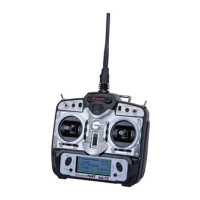199
Program description - Helicopter mixer / Auto-rotation setting
Throttle setting AR
Although pilots will be expected to cut the glow motor
completely during competitions, This is rather incon-
venient during training sessions because the motor
must be restarted after every practice auto-rotation
landing.
Therefore, for training sessions, set this line’s value
such that a combustion motor is held at a safe idle
without the clutch engaging during the auto-rotation
phase; electric drive systems should be set safely to
“Off”.
Note:
The “Motor Stop” option in the »Base setup model«
menu offers an alternative “Emergency STOP” func-
tion.
Tail rotor AR
In normal flight, the tail rotor is set so that it compen-
sates for motor torque while the model is hovering. It
therefore generates some a certain amount of thrust
even in its normal position. The level of thrust is then
varied by the tail rotor control system, and also by the
various mixers which provide all manner of torque com-
pensation, while the tail rotor trim is also used to com-
pensate for varying weather conditions, fluctuations in
system rotational speed and other influences.
For auto-rotation, however, the main rotor is not driven
by the motor, but by the “windmill” principle. Since this,
in turn, does not generate any torque for which the tail
rotor must compensate, all corresponding mixers are
switched off automatically.
Since the absence of torque in auto-rotation also
means the above-mentioned thrust is superfluous,
however, a different tail rotor configuration is also re-
quired:
Cut the motor and place the helicopter on the ground
in a level attitude. With the transmitter and receiving
system switched on, select the flight phase “Auto-
rotation” and then fold the tail rotor blades down. Now
change the value on the “Tail rotor” line until the tail ro-
tor blade angle of attack is zero degrees. Viewed from
the tail, the tail rotor blades should be parallel to one
another.
Depending on the friction and running resistance of the
gearbox, the fuselage may still yaw slightly, however.
This relatively slight torque must then be corrected if
necessary by adjusting the tail rotor blade pitch angle.
This value will always be a figure between zero degrees
and a pitch angle opposed to the pitch angle in normal
flight.
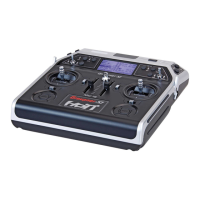
